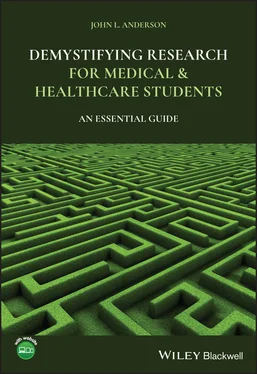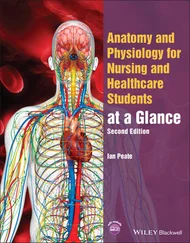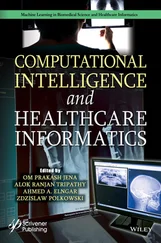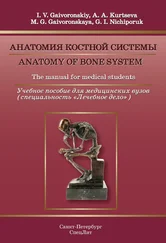This analysis demonstrated that treatment within the context of a phase I trial could be considered as a valuable therapeutic option. Interestingly, those trials incorporating classical cytotoxics were associated with a better outcome. Clearly, this relates to patient selection, particularly when the trial may involve the use of a cytotoxic in chemonaive cases. The treatment in our cohort was generally well tolerated and treatment‐related deaths and toxicities were low. Moreover, a significant number of patients achieved disease control for a significant duration. However, the challenge remains in appropriate patient selection and for this, the use of an objective clinical score could be a helpful tool.
(Arkenau et al. 2008)
Now, here is a challenge for you: (i) What sense do you make of these findings? (ii) What is missing from these trials? (My thoughts are given at the end of the chapter.)
If Phase I trials show that a new agent is relatively safe, the next step in the development of a new drug is a Phase II trial.These specifically check effectiveness – to see if it does what we want it to do. But these trials continue to monitor the safety and side effects of the developing treatment. Larger numbers are recruited into these trials. The CRUK literature defines them like this:
Phase II trials aim to find out:
if the new treatment works well enough to be tested in a larger Phase III trial;
which types of cancer the treatment works for;
more about side effects and how to manage them;
more about the best dose to use.
These treatments have been tested in Phase I trials, but may still have side effects that the doctors don't know about. Treatments can affect people in different ways.
Phase II trials are usually larger than phase I. There may be up to 100 or so people taking part. Sometimes in a phase II trial, a new treatment is compared with another treatment already in use, or with a dummy drug (placebo).
Some Phase II trials are randomised. This means the researchers put the people taking part into treatment groups at random.
(CRUK 2020)
Again, the principles are the same for cancer drug trials as for other drug trials except that cancer drug trials usually recruit people with cancer and do not pay them; whereas, in other drug trials, healthy volunteers are recruited to take part and they are paid.
Safety in Clinical Trials
There have been some tragic events during Phase I and Phase II trials. Some have been noted above in relation to Phase I oncology trials. But other trials involving heathy volunteers have ended in tragedy. I have selected a few to illustrate this.
Six healthy young male volunteers at a contract research organisation were enrolled in the first Phase I clinical trial of TGN1412, a novel superagonist anti‐CD28 monoclonal antibody that directly stimulates T cells. Within 90 minutes after receiving a single intravenous dose of the drug, all six volunteers had a systemic inflammatory response characterised by a rapid induction of proinflammatory cytokines and accompanied by headache, myalgias, nausea, diarrhoea, erythema, vasodilatation, and hypotension. Within 12–16 hours after infusion, they became critically ill, with pulmonary infiltrates and lung injury, renal failure, and disseminated intravascular coagulation. Severe and unexpected depletion of lymphocytes and monocytes occurred within 24 hours after infusion. All six patients were transferred to the care of the authors at an intensive care unit at a public hospital, where they received intensive cardiopulmonary support (including dialysis), high‐dose methylprednisolone, and an anti‐interleukin‐2 receptor antagonist antibody. Prolonged cardiovascular shock and acute respiratory distress syndrome developed in two patients, who required intensive organ support for 8 and 16 days. Despite evidence of the multiple cytokine‐release syndrome, all six patients survived. Documentation of the clinical course occurring over the 30 days after infusion offers insight into the systemic inflammatory response syndrome in the absence of contaminating pathogens, endotoxin, or underlying disease. (Suntharalingam et al. 2006)
Before it was trialled on human subjects, Fialuridinewas tested on animals, including mice, rats, dogs, monkeys, and woodchucks. Those tests found that animals could survive doses which were a hundred times more than those given to humans without any toxic reactions. A Phase II trial on human subjects was conducted. In week 13 one of the subjects suddenly developed hepatic toxicity and lactic acidosis. The trial was stopped. But seven more subjects became ill and five died. Two had to have liver transplants. These totally unforeseen consequences led to a review of protocols for testing potent biological molecules on human subjects. Attarwala (2010) concluded, ‘Though there is always a risk involved with clinical trials, these risks can be potentially reduced if more scientific research toward development of animal models closely mimicking drug behavior in humans can be developed.’
In one phase trial, BIA 10‐2474(an orally administered reversible FAAH inhibitor) was given to healthy volunteers with a view to assessing its safety.
‘Single doses (0.25 to 100 mg) and repeated oral doses (2.5 to 20 mg for 10 days) of BIA 10‐2474 had been administered to 84 healthy volunteers in sequential cohorts; no severe adverse events had been reported. Another cohort of participants was then assigned to placebo (2 participants) or 50 mg of BIA 10‐2474 per day (6 participants)’. ‘They had received the highest cumulative dose (250 to 300 mg) administered to humans’ (Kerbrat et al. 2016). In this final cohort, four of the six participants developed an acute, rapidly progressing neurological reaction. This included headaches, memory impairment and altered consciousness. Magnetic Resonance Imaging (MRI) scans showed symmetric, bilateral cerebral lesions ‘including microhemorrhages and hyperintensities on fluid‐attenuated inversion recovery and diffusion‐weighted imaging sequences predominantly involving the pons and hippocampi’. ‘One became brain dead. Two recovered. One person had memory impairment and one had a residual cerebellar syndrome.’
Two of the four had previously taken part in other Phase I trials. Kerbrat et al. (2016) suggest that the adverse reactions were related to an accumulation of the drug. They conclude:
severe toxic effects in the central nervous system as a result of an increased level of endocannabinoids have not been reported previously; this suggests the possibility of an offtarget effect of the drug, owing to the low specificity of BIA 10‐2474 for FAAH, or an effect of a metabolite.4 These unanticipated severe adverse events were caused by the drug and reflect the complexities of clinical drug research.
(Kerbrat et al. 2016)
Why Do People Take Part in these Trials?
Chen and her colleagues (2017) carried out a survey of 654 healthy volunteers who had taken part in a Phase I trial in USA, Belgium, and Singapore. The asked them about their willingness to enrol in such trials. They found that their participants were willing to take part in many kinds of Phase I trials – including those involving diverse side effects and procedures. They were keener to participate in trials with low risk, familiar procedures. Their willingness did not vary with their income. They were least likely to agree to invasive procedures like lumbar punctures and bone marrow biopsy, or where there was a risk of irreversible damage – such as kidney damage or death – or where there might be a chance of effects on their minds. ‘In addition, respondents reported that more money, fewer total procedures, the importance of a study, and the doctor performing the procedure would influence their willingness to participate in a given study. Money is an important factor in healthy volunteers' decisions to participate in phase 1 clinical trials, thus it is not surprising that more money might influence their decisions’ (Chen et al. 2017). Not surprisingly, those with lowest incomes express desire to take part in clinical trials. Chen et al. (2017) reported that there was a relatively high proportion of participants with incomes of less than half the national average income in the three countries in their study.
Читать дальше












